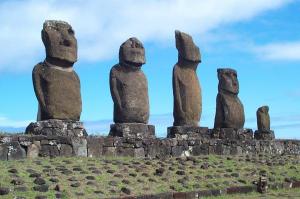
© Mark Witton
In the Mesozoic Era, 70 million years before birds first conquered the skies, pterosaurs dominated the air with sparrow- to Cessna-sized wingspans. Researchers suspected that these extinct reptiles sustained flight through flapping, based on fossil evidence from the wings, but had little understanding of how pterosaurs met the energetic demands of active flight.
A new study published today in the journal
PLoS ONE by researchers from Ohio University, College of the Holy Cross and the University of Leicester explains how balloon-like air sacs, which extended from the lungs to inside the skeleton of pterosaurs, provided an efficient breathing system for the ancient beasts. The system reduced the density of the body in pterosaurs, which in turn allowed for the evolution of the largest flying vertebrates.
"We offer a reconstruction of the breathing system in pterosaurs, one that proposes the existence of a mechanism with the same essential structure to that of modern birds - except 70 million years earlier," said study co-author Leon Claessens, an assistant professor of biology at the College of the Holy Cross.
